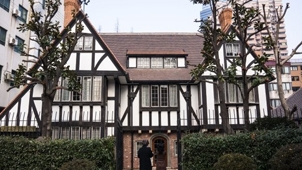Hudec Week – Hungarian Architecture Forum – Shanghai
For the invitation of the Association of Architects in Shanghai, a ten-member delegation visits the program of the Hudec week in Shanghai in December 2013.
Lecture topics of the professional program in the Hudec Memorial Hall:
Hudec and his Contemporaries, Hungarian Vernacular Architecture, Art Nouveau in Hungary, Organic Architecture, Contemporary Architecture in Hungary and in China

Hungarian-Slovak architect L├Īszl├│ Hudec was one of the key figures in shaping the look of Shanghai during the 1930s. He was responsible for structures across the city, from the old power station in Zhabei district to the Union Brewery (still standing opposite the Qianshuiwan Creative Arts Centre).
Born in Austria-Hungary in 1893, Hudec volunteered to join the army at the outbreak of the First World War, but was sent to a prison camp in Siberia following his unitŌĆÖs capture by Russian forces in 1916. The story goes that on his way to be transferred to this camp, Hudec jumped from a train near the Chinese border and fled to Shanghai.
Having opened his own architectural practice in the city in 1925, Hudec left the city 22 years later having helped create dozens of buildings throughout the city and leaving an indelible mark on Shanghai. HudecŌĆÖs former residence at 135 Panyu Lu has been converted into a museum with glass cabinets displaying old architectural plans, sketches and photographs, and is set to open to the public in the next few months. This walk takes in some of his key designs between PeopleŌĆÖs Square and The Bund.

Grand Theatre, 1933, architect: L├Īszl├│ Hudec
